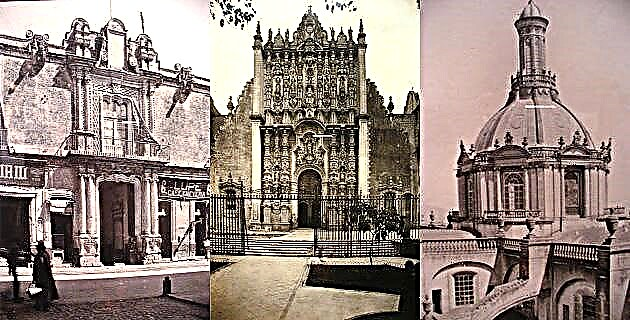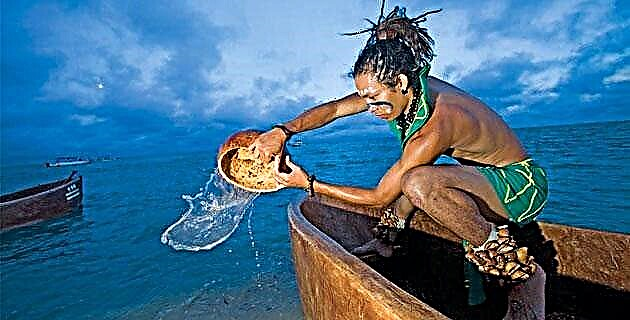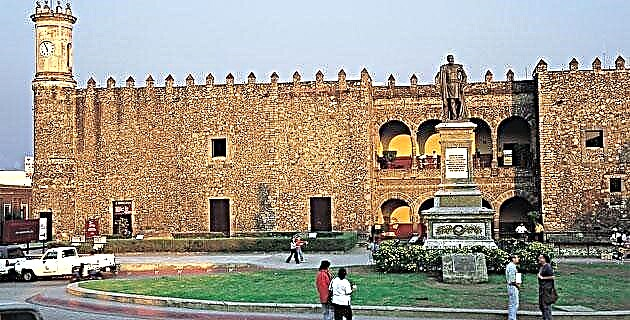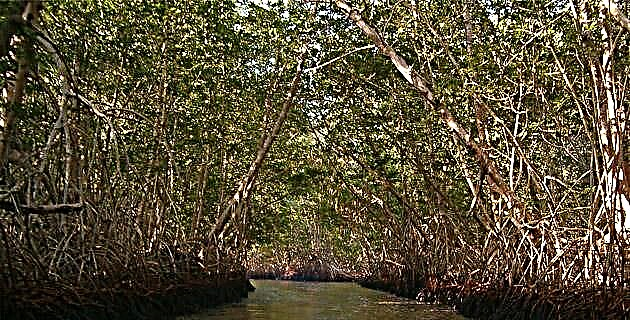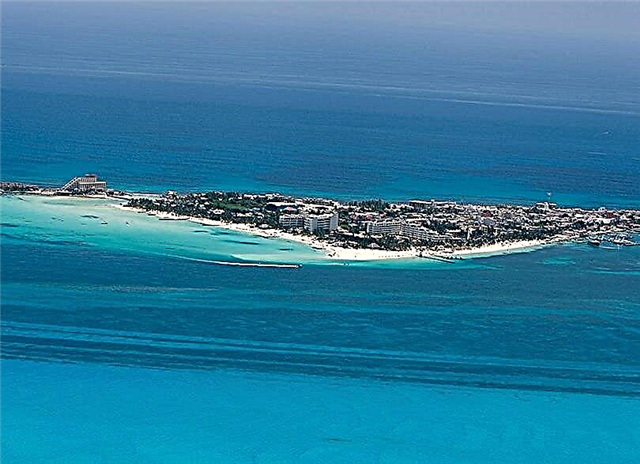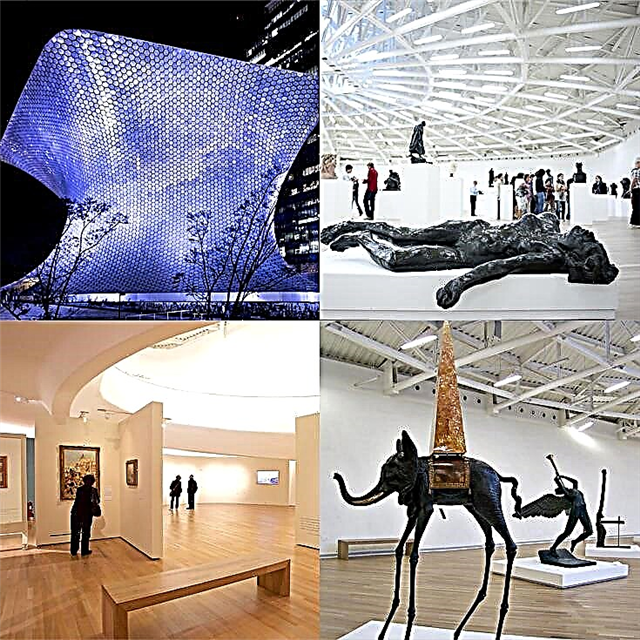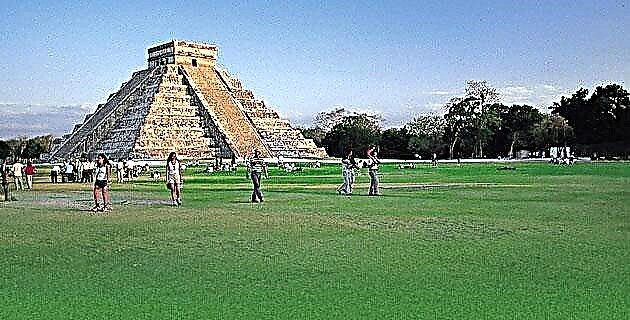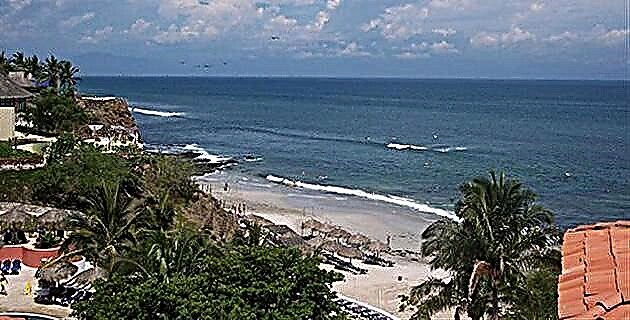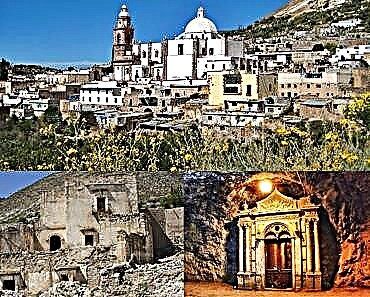In the middle of the Sierra de Catorce, the Magic Town de Real de Catorce is always waiting for visitors to tell them about its legendary mining past and show them its wonderful places. We present you the complete guide to the cozy town of Potosí.
1. Where is Real de Catorce located?

Real de Catorce is a Potosino town nestled in the heart of the Sierra de Catorce at more than 2,700 meters above sea level. It is the head of the municipality Catorce, located in the north of the state of San Luis Potosí. Real de Catorce was a mining town between the years 1770 and the first decade of the 20th century and the different buildings built during its prosperous stages constitute its main tourist attractions. In 2001, Real de Catorce was incorporated into the Mexican Magical Towns system based on its architectural heritage, its mining past, its indigenous culture for being one of the main seats of the Huichol civilization, and its legends and traditions.
2. How did the town arise?

It is not known exactly when the first silver vein was discovered, but in 1772 the town already existed. The first large veins were found in 1778 and in 1779 the Guatemalan of Spanish origin Silvestre López Portillo founded the town with the name of Real de Minas de Nuestra Señora de la Limpia y Purísima Concepción de Guadalupe de los Álamos de Catorce. It will be understood why it was shortened shortly after to Real de Catorce. At the beginning of the 19th century, the Real de Catorce mines ranked second in production worldwide. The great wealth of silver came to an end around 1910.
3. What weather awaits me in Real de Catorce?
The town of Real de Catorce enjoys a high mountain climate, protected by its altitude of 2,728 meters above sea level. The coolest months are those of winter in the northern hemisphere, with the average temperature being below 11 ° C in December and January. However, the thermometer can drop as low as 5 ° C in the cold season, so you have to take precautions. In the warmest period, from June to August, the mercury level averages 22 ° C.
4. What are the main distances there?

The closest city in Potosí to Real de Catorce is Matehuala, which is 61 km away. from the Pueblo Mágico, although the journey takes more than an hour for the return that must be given in the direction of Cedral and San Juan de Vanegas. To go from San Luis Potosí, the state capital, to Real de Catorce, you have to travel 256 km. heading north towards Matehuala. Saltillo is located at 287 km., Zacatecas at 310 km. and Mexico City at 673 km. traveling towards San Luis Potosí.
5. What are the main attractions of Real de Catorce?
The mining prosperity lived by Real de Catorce for 3 centuries left important buildings and ruins, such as the Parroquia de la Purísima Concepción, the Church of the Virgin of Guadalupe, the Casa de la Moneda, the Ghost Town, the Palenque de Gallos, the Plaza de Toros, the Ogarrio Tunnel, the Hacienda Laguna Seca and some bridges, particularly the Zaragoza. The strong presence of the Huichol culture in the Magic Town can be appreciated in the Wirikuta reserve, Cerro El Quemado and in the art of this ethnic group. The set of attractions of Real de Catorce is complemented by the legends of the town and its delicious culinary art.
6. What stands out in the Parroquia de la Purísima Concepción?
La Purísima Concepción is the patron saint of Spanish miners and the Mexican and peninsular miners who exploited the town's rich veins of silver also made her their holy protector. The façade of the eighteenth-century temple is neoclassical, with Doric brushstrokes, and inside it stands out the neo-Gothic altar, which was installed at the beginning of the twentieth century. On the walls there are several altarpieces, the majority offered by the faithful in gratitude for favors received. Other valuable pieces of the church are its pipe organ from 1834, which has 1,200 flutes and the image of San Francisco de Asís.
7. What is the history of the image of Saint Francis of Assisi?
The image of San Francisco de Asís that is venerated in the Parish of the Immaculate Conception was first in the Church of Guadalupe, located in the pantheon of Real de Catorce. The fourteen-year-olds call him colloquially and affectionately El Charrito and Panchito and his parties, which are celebrated between September 25 and October 12, are attended by tens of thousands of pilgrims and tourists, in a devotion that has grown over time. . According to tradition, the image arrived in town on the back of a donkey, its origin unknown.
8. What is the Church of the Virgin of Guadalupe like?

This church has the unusual peculiarity that it is located within the Real de Catorce pantheon. It was built to bury both the most notable deceased in the town inside a temple and a cemetery, and inside there are 70 tombs of wealthy people, priests and other illustrious fourteen-year-olds. The temple of the Virgin of Guadalupe was the first shelter of the image of San Francisco de Asís, now located in the Parroquia de la Purísima Concepción. On one side of the church there is a very old chapel that was used to watch over the bodies before burials.
9. Where is the Ghost Town?

The area of Real de Catorce that receives the name of Pueblo Fantasma are the ruins of the Compromiso mining shaft and the estates where the mineral exploited in the Concepción mines was benefited. Two versions dispute the origin of the name of Ghost Town. One indicates that it arose due to the ghostly appearance that the area acquires at certain times of the year, when the pressure differential between the interior of the shaft and the exterior generates columns of humidity that veil the environment. The other version of the name Ghost Town is the dilapidated and abandoned look.
10. When was the Mint built?

This house was completed in 1863 and in that same year the minting of silver coins began, as indicated by some pieces that are preserved. In 1866, the French empire that occupied Mexico gave the order to close the house. The Town Hall of the town prepared a letter requesting Maximiliano to annul the order, asking General Tomás Mejía to be its bearer before the emperor. However, the letter was never answered, probably because in June 1867, both Mejía and Maximiliano were shot in Santiago de Querétaro. There are Real de Catorce coins prior to 1863, but they were made in local workshops. Now the Casa de la Moneda is a Cultural Center.
11. Are there any outstanding coins for collectors?

The 8 reales coin from 1811 is the rarest and most important of those made in the town and one of the most appreciated by Mexican and foreign fans of numismatics. It is a piece of silver with a smooth edge with an irregular module of 38 millimeters. Given its rarity, a specimen can be priced at $ 50,000 and is therefore subject to fakes. It was minted during the turbulent years of the reign of Ferdinand VII of Spain by supporters of the so-called King Felón.
12. What is the interest of Palenque de Gallos?

Cockfights constitute a controversial entertainment and gambling medium in several Latin American countries and, together with bullfighting, they were the favorite entertainment of the miners of fourteen years between the 18th and 20th centuries. Real de Catorce had one of the most monumental galleys in Mexico and the arena of Roman architecture now offers cultural shows, after a restoration in 1977 with which it regained its former splendor.
13. When did the Plaza de Toros open?

The Real de Catorce bullfighting arena was inaugurated in 1791 and according to tradition, it was an award to the people for the accession to the Spanish throne of King Carlos IV El Cazador. Unfortunately, most of the building was lost amid the devastating incursions by fighting armies during the 19th century. It was the object of a restoration in 1863 in order to bring the brave festival back to Real de Catorce, but 5 years later a period of prohibition of bullfighting began. Two great bullfighters passed through the arena: Ponciano Díaz, nicknamed El Torero Charro and «Ojitos», Rodolfo Gaona's teacher.
14. Why was the Ogarrio Tunnel built?

This 2,300-meter-long tunnel that is now a tourist attraction was one of the main engineering works in Mexico in the late 19th and early 20th centuries. It was built by the Counts de la Maza, wealthy Spanish mining entrepreneurs, who named it Ogarrio, their hometown in Cantabria. The tunnel, which today constitutes the access road to the population, was built for the entry and exit of materials and personnel in the mining operation and the shafts that have been preserved unaltered for more than 100 years can still be admired.
15. What's at Hacienda Laguna Seca?

Not far from Real de Catorce this former hacienda is located, where it is possible to admire the environment in which mezcal was made several centuries ago. The manufacturing process of the ancient drink has been modernized, but the building retains its basic structure, with its characteristic architectural elements, such as the wide vaults above the fermentation piles, the mills and the stills. Likewise, it is possible to admire the stone ovens for cooking the maguey and the old brick chimneys. The maguey leaves now arrive at the factory in motor vehicles, but you can still breathe the environment in which the transport was done with mules.
16. What is the interest of the Zaragoza Bridge?

This wide and beautiful bridge, of several in Real de Catorce, is on the way to the cemetery and the old bullring, and is the oldest in the Pueblo Mágico. Its wall is crowned by triangular structures and in its center it has a high bench and an attractive finish. The bridge is over a canyon that is lost between the foothills of the mountains, offering beautiful views.
17. Are there any tourist routes with operators?

In the town there is a cooperative called the Caballerangos de Real de Catorce, which leads tourists through the three most interesting routes of the Sierra de Catorce, that of Cerro Grande, that of Pueblo Fantasma and that of Quemado. The Cerro Grande route has stops at the San Agustín and Milagros mines, at the Zapato and Los Riscos caves and at the Ghost Town. The special Route to the Ghost Town includes a stop at the Purísima Concepción mine. The Ruta del Quemado has as its final destination the Cerro del Quemado. If you want to do the old-fashioned rides, hire them on horseback.
18. What is the importance of Cerro El Quemado?

The Wixárikas or Huichols form an Indian ethnic group from the Sierra Madre Occidental, one of whose ancestral traditions is the consumption of peyote, a hallucinogenic cactus endemic to Mexico. The main sacred center for collecting peyote is Cerro El Quemado in Real de Catorce, the "Place where the sun rises" for the indigenous people. In this desert elevation that looks like burned earth, the pilgrimages of the different Huichol communities end, who go there to communicate with their gods and ancestors.
19. How important is the Wirikuta reserve?

It is a sacred territory of the Huichols, of about 140,000 hectares of reservation, whose main species of flora, sacred to the indigenous people, is peyote, the hallucinogenic cactus that they consume in their ceremonies. Peyote is at risk of extinction and its main habitat in Mexico is Wirikuta. A good part of the flora and fauna of Wirikuta is endemic, that is, it only lives there, so it is a threatened species whose disappearance would be a mortal blow for the Huichol culture. The Golden Eagle, emblem of Mexico, is one of the most beautiful birds in Wirikuta.
20. What is Huichol art like?

The artistic expressions of the Huichol are beautiful, like the pictures or tables of yarn, their most characteristic and recognizable handicraft product. These are figures with striking and colorful designs, which are made with stamens on tables covered in wax and resin. Although the making of the boards has been modernized using commercial threads and beads of a wide variety of colors, it is still possible to find authentic pieces, mainly made for ceremonial purposes.
21. What are the main legends of the town?

In the world of Mexican mining there is a legend of a ghostly character, who in Real de Catorce is called El Jergas. He is described as a man who presents himself in a mining outfit and persuades a worker to accompany him to an inaccessible place, where the worker is abandoned and later found by his colleagues, thanks to the clues that El Jergas leaves on the way. . Connoisseurs say that it is still possible to see El Jergas with his helmet and mining lamp walking through the Ogarrio tunnel in search of unsuspecting miners. Another curious legend of Real de Catorce is that of Los Dos Bradencieros.
22. What is the legend of The Two Brawlers like?

This legend tells that Valentin and Valente, two miners from the town, only lived pending the arrival of Saturday to get drunk with pulque. On one occasion when they were very drunk, they started an argument and decided to settle the matter in a fist fight outside the pulqueria. As none of them could even punch, they drew their knives and as they stabbed each other, a character appeared and struck them with a rope, rendering them unconscious. After waking up from drunkenness, both remembered that the character looked like Saint Francis of Assisi and when they went to the temple, they saw the saint with his habit torn, supposedly by the stabbing he had been given.
23. What stands out in the gastronomy of Real de Catorce?

In Real de Catorce you can eat some of the most delicious dishes of Potosí cuisine. Among the most valued delicacies are the wedding barbecue, the pork prepared with ancho chili; the enchiladas potosinas made with refried beans and red chili; the cabochons and nopales with tomato, onion and aromatic herbs. The typical drinks are mead and colonche.
24. Where can I stay?

Real de Catorce has some simple and welcoming hotels, such as El Real, Ruinas del Real, El Rincón del Pintor, Shantiniketan - Morada de Paz; and Hotel Real Bonanza. Many visitors to the Pueblo Mágico prefer to stay in the nearby city of Matehuala, 61 km away. from Real de Catorce, where Hotel María Esther, Hotel Casa Real Matehuala and Las Palmas Midway Inn stand out. In the town of Cedral, 35 km. from Real de Catorce, is the Hotel Desierto.
25. What are the best restaurants?

Mesón de la Abundancia, located at Lanzagorta 11, is praised for its pizzas and pastas. Café Azul, at Lanzagorta 27, serves delicious crepes and cakes. Realbucks, also in Lanzagorta, offers an excellent Veracruz coffee, with delicious cakes. Al Gusto is an Italian house located at Calle Lerdo de Tejada 3, serving freshly made pasta with authentic Italian flavor. Other options are the restaurant of the Hotel El Real, Tolentino’s and Restaurante Monterrey.
We hope that your next trip to charming Real de Catorce will be full of unforgettable experiences and that this comprehensive guide will do its bit. See you soon.



